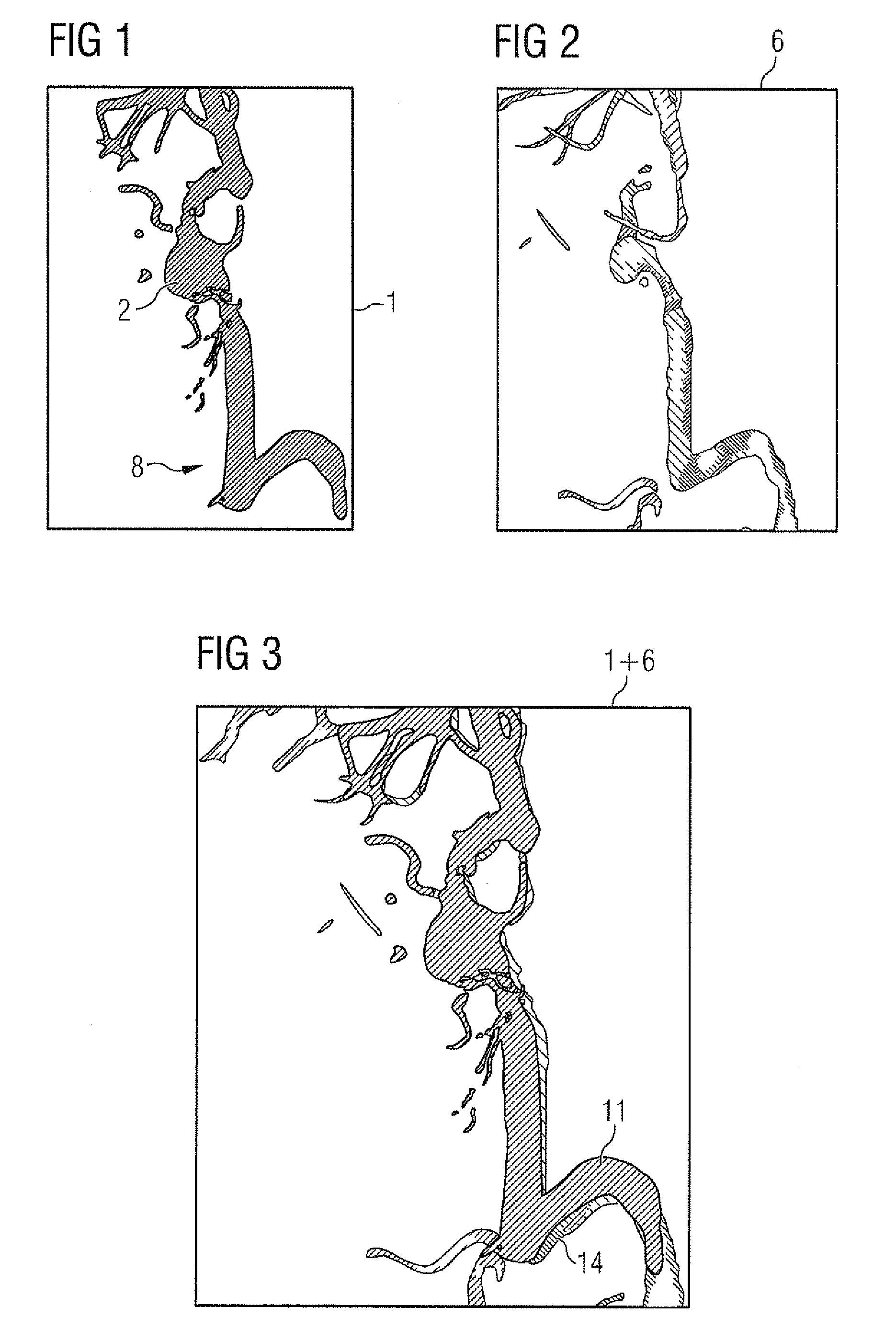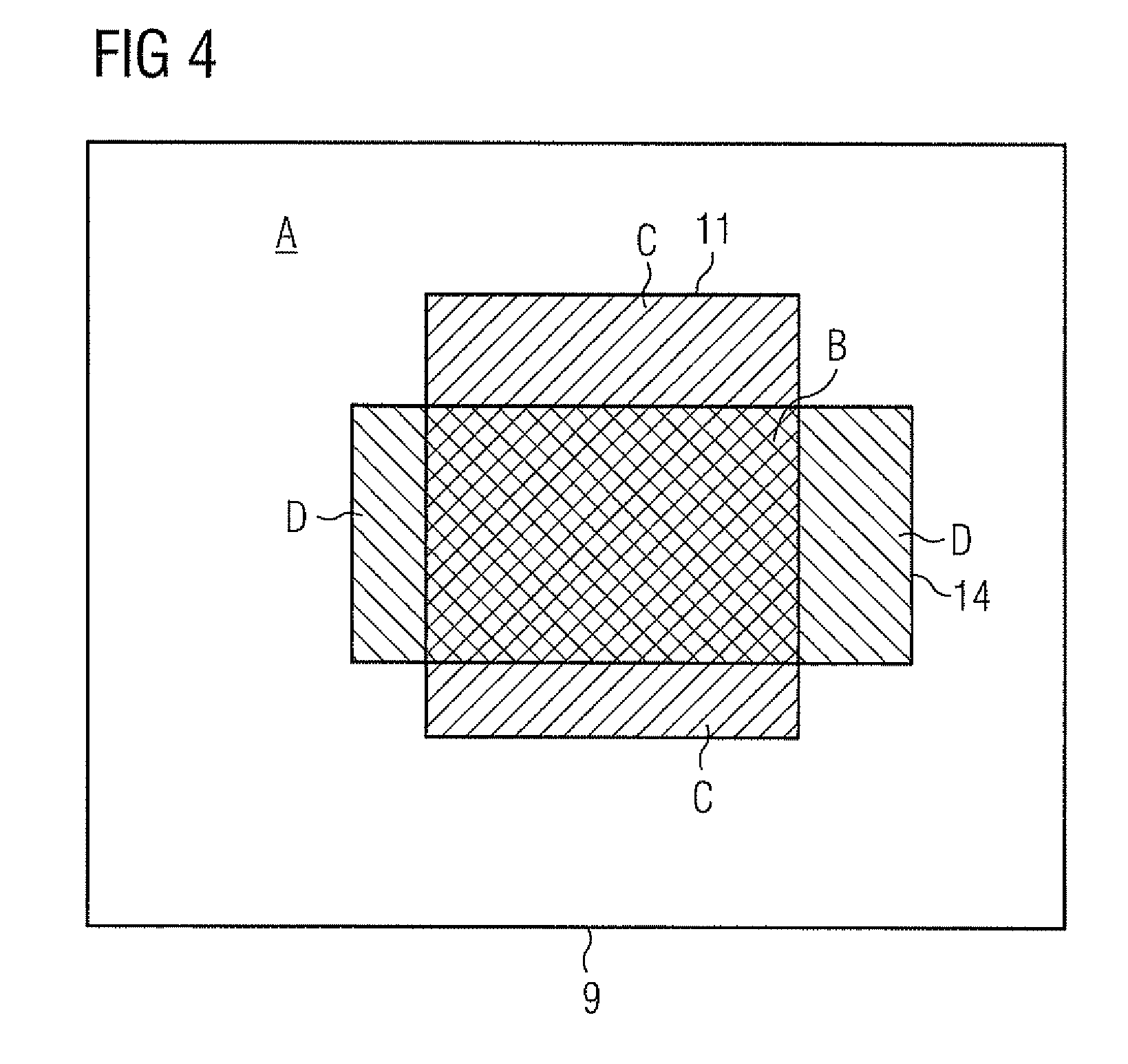Method for post-processing a three-dimensional image data set of vessel structure
a three-dimensional image and data set technology, applied in image enhancement, instruments, angiography, etc., can solve the problems of large loss of local resolution, difficult segmentation correctly, and low local resolution of three-dimensional image data sets generated with currently used imaging modalities
- Summary
- Abstract
- Description
- Claims
- Application Information
AI Technical Summary
Benefits of technology
Problems solved by technology
Method used
Image
Examples
Embodiment Construction
[0036]FIG. 1 shows a typical 2D DSA 1 of a vessel structure 2 with an aneurysm 2a. As one might suspect, the 2D DSA has outstanding local resolution but there is an absence of any depth information.
[0037]FIG. 2 on the other hand shows a three-dimensional display 3 of the same vessel tree which has been obtained by a 3D rotation pass with a C-arm x-ray device. The 3D image data set has been segmented with a global segmentation threshold value and only the values lying above the threshold value are shown. A so-called “volume rendering” display has been selected in which the vessel structure in the 3D volume has been provided with computed shadow and light effects in order to create a visual three-dimensional impression.
[0038]It is precisely with 3D image data sets that the selected global segmentation threshold value is very important, since an aneurysm in particular is displayed markedly differently with different threshold values.
[0039]In accordance with the invention, as in FIG. 3,...
PUM
 Login to View More
Login to View More Abstract
Description
Claims
Application Information
 Login to View More
Login to View More - R&D
- Intellectual Property
- Life Sciences
- Materials
- Tech Scout
- Unparalleled Data Quality
- Higher Quality Content
- 60% Fewer Hallucinations
Browse by: Latest US Patents, China's latest patents, Technical Efficacy Thesaurus, Application Domain, Technology Topic, Popular Technical Reports.
© 2025 PatSnap. All rights reserved.Legal|Privacy policy|Modern Slavery Act Transparency Statement|Sitemap|About US| Contact US: help@patsnap.com



